Here’s the August 2013 update for my Beat the Market Experiment, a series of three portfolios started on November 1st, 2012:
- $10,000 Passive Benchmark Portfolio that would serve as both a performance benchmark and an real-world, low-cost portfolio that would be easy to replicate and maintain for DIY investors.
- $10,000 Beat-the-Benchmark Speculative Portfolio that would simply represent the attempts of an “average guy” who is not a financial professional and gets his news from mainstream sources to get the best overall returns possible.
- $10,000 P2P Consumer Lending Speculative Portfolio – Split evenly between LendingClub and Prosper, this portfolio is designed to test out the alternative investment class of person-to-person loans. The goal is again to beat the benchmark by setting a target return of 8-10% net of defaults.
As requested, I updated the scale to zoom in on the comparison chart. You can view it the old way here.
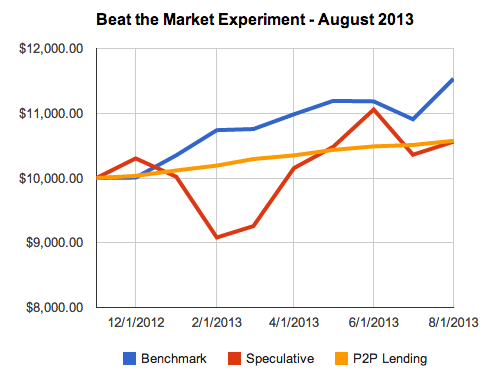
Summary. Values are as of August 1, 2013. 9 months into this experiment, the passive benchmark portfolio remains the leader and if anything is widening the gap. My neglected speculative portfolio has been more volatile and also consistently behind the benchmark in this bull market. As for the P2P portfolio, it is starting to look like LendingClub may perform better than Prosper. Although my Prosper portfolio is earning slightly higher average interest, it also has significantly more late loans which has more than offset the higher interest. I’m slightly above 8% annualized return for LendingClub currently using my metrics, slightly below 7% for Prosper.
$10,000 Benchmark Portfolio. I put $10,000 into index funds at TD Ameritrade due to their 100 commission-free ETF program that includes free trades on the most popular low-cost, index ETFs from Vanguard and iShares. Also no minimum balance requirement, no maintenance fees, no annual fees. The portfolio was based loosely on a David Swensen model portfolio. Screenshot, click to enlarge:
$10,000 Speculative Portfolio. Many people speculate with their money, buying and selling stocks now and then, but they rarely track their performance even though they may brag about their winners. Honest tracking is the primary reason for this “no-rules, just make money” account. I dropped $10,000 into a TradeKing account for this portfolio due to their low-cost $4.95 trade structure, free tax-management gain/loss software, and free dividend reinvestment. Screenshot:
$10,000 Prosper and LendingClub Portfolio. For this one, I started with $10,000 split evenly between Prosper Lending and Lending Club, and went to work lending other people money and earning interest with an 8% target net return. So it’s also a race-within-a-race to see which option offers the best returns.
The LendingClub portfolio now has 232 current and active loans, 22 loans that were paid off early, and several in funding. One of the loans ($21) is between 31-120 days late, which I will assume to be unrecoverable. Two of the loans have been charged off ($48). I also have about ~$352 in uninvested cash and ~$36 in accrued interest. Adjusted total is $5,327.
My Prosper portfolio now has 228 current and active loans, 21 loans that were paid off early, and the rest in funding. 3 loans are between 1-30 days late. Seven (!) are over 30 days late, which to be conservative I am going to write off completely (~$156 in remaining principal). One has been charged-off. Adjusted total is $5,399 – $152 = $5,247.
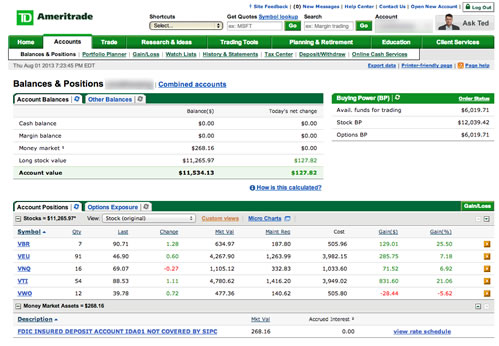
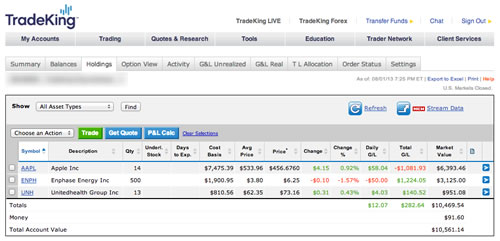
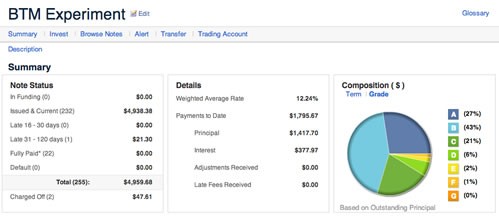
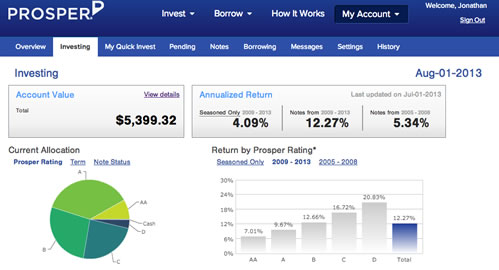
 The Best Credit Card Bonus Offers – October 2024
The Best Credit Card Bonus Offers – October 2024 Big List of Free Stocks from Brokerage Apps
Big List of Free Stocks from Brokerage Apps Best Interest Rates on Cash - October 2024
Best Interest Rates on Cash - October 2024 Free Credit Scores x 3 + Free Credit Monitoring
Free Credit Scores x 3 + Free Credit Monitoring Best No Fee 0% APR Balance Transfer Offers
Best No Fee 0% APR Balance Transfer Offers Little-Known Cellular Data Plans That Can Save Big Money
Little-Known Cellular Data Plans That Can Save Big Money How To Haggle Your Cable or Direct TV Bill
How To Haggle Your Cable or Direct TV Bill Big List of Free Consumer Data Reports (Credit, Rent, Work)
Big List of Free Consumer Data Reports (Credit, Rent, Work)
Great post. Good to see different investment options stacked against one another directly. Should become more and more interesting in the long-term (especially if the economic recovery takes another dip anytime soon).
For Prosper and Lending Club, are you splits between grades manual or automated?
Curious, with Lending Club, which Grade Notes were charged off?
If you were increasing your investment every paycheck, you might find yourself with different results. For example, in your speculative portfolio you would have been able to “buy low” and benefit form the volatile swings.
@moneystepper – I am split between grades, currently about 27/43/21/9 A/B/C/D or lower for LendindClub. Details can be found in the screenshots provided.
@Shannon Rose – One was A and one was C.
@Justin – Yes, it is possible that dollar cost averaging may have helped the results in an overall rising market.
Was there a reason you bought the etfs within ameritrade instead of vanguard? I’m guessing it was cheaper since you also have a vanguard account.
The primary reason I went with TD Ameritrade is that I didn’t want to commingle my funds with those in my existing Vanguard account for this experiment, while at the same time minimizing fees (I haven’t paid any fees at all so far with TDA).
The secondary reason is was simply to try out TDA in case I wanted to buy some of the other ETFs that they offer commission-free. They have some good iShares ETFs. So far, so good. If you’re only buying Vanguard mutual funds, I’d still stick with just Vanguard.
Jonathan – do you do your own rebalancing in your benchmark portfolio? How often do you do this? I use Scottrade and there’re no free ETFs. I may have to open a TD Ameritrade account just for that.